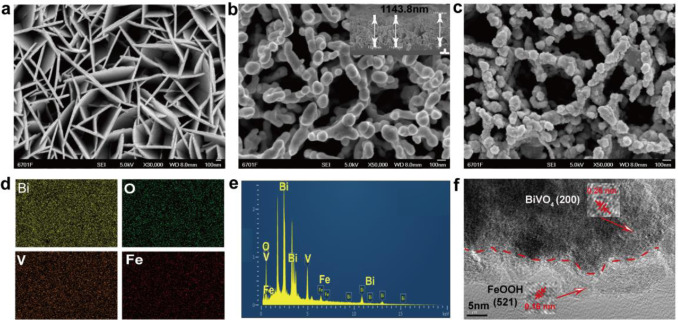Abstract
Photoelectrochemical (PEC) analysis technique provides a unique route for sensitive biomolecular detection. In this paper, a novel visible-light-driven PEC sensor for detection of dopamine (DA) was fabricated based on ultrathin FeOOH cocatalyst modified nanoporous BiVO4 photoanode. Scanning electrochemical microscopy (SECM) technique was employed to characterize the photocatalytic activities of the as-prepared photoanodes surfaces, and the first-order heterogenous electron transfer rate constants (K-eff) were evaluated, which further revealed the photocatalytic performance of the modified photoanodes in water oxidation and the PEC sensing mechanism. A remarkable water oxidation photocurrent on the ITO/BiVO4/FeOOH photoanode could be achieved and served as anodic photocurrent of blank sample for PEC sensing dopamine (DA), which showed linearly range of 0.2-40 mu M and 40-1400 mu M with a detection limit of 0.09 mu M. This method showed simplicity, high sensitivity and selectivity, high stability and wide linearity range, which provided a promising platform for the development of PEC sensor and offered an insight into the exploitation of BiVO4-based photolysis water materials for PEC bioanalytical purposes.

Keywords Plus:SCANNING ELECTROCHEMICAL MICROSCOPYELECTROSTATIC INTERACTION MECHANISMHYDROTHERMAL SYNTHESISSENSITIVE DETECTIONGOLD NANOPARTICLESBIVO4 PHOTOANODESQUANTUM DOTSHETEROSTRUCTURENANOCOMPOSITESPERFORMANCE
Published in ELECTROCHIMICA ACTA,Volume414;10.1016/j.electacta.2022.140207,MAY 10 2022


